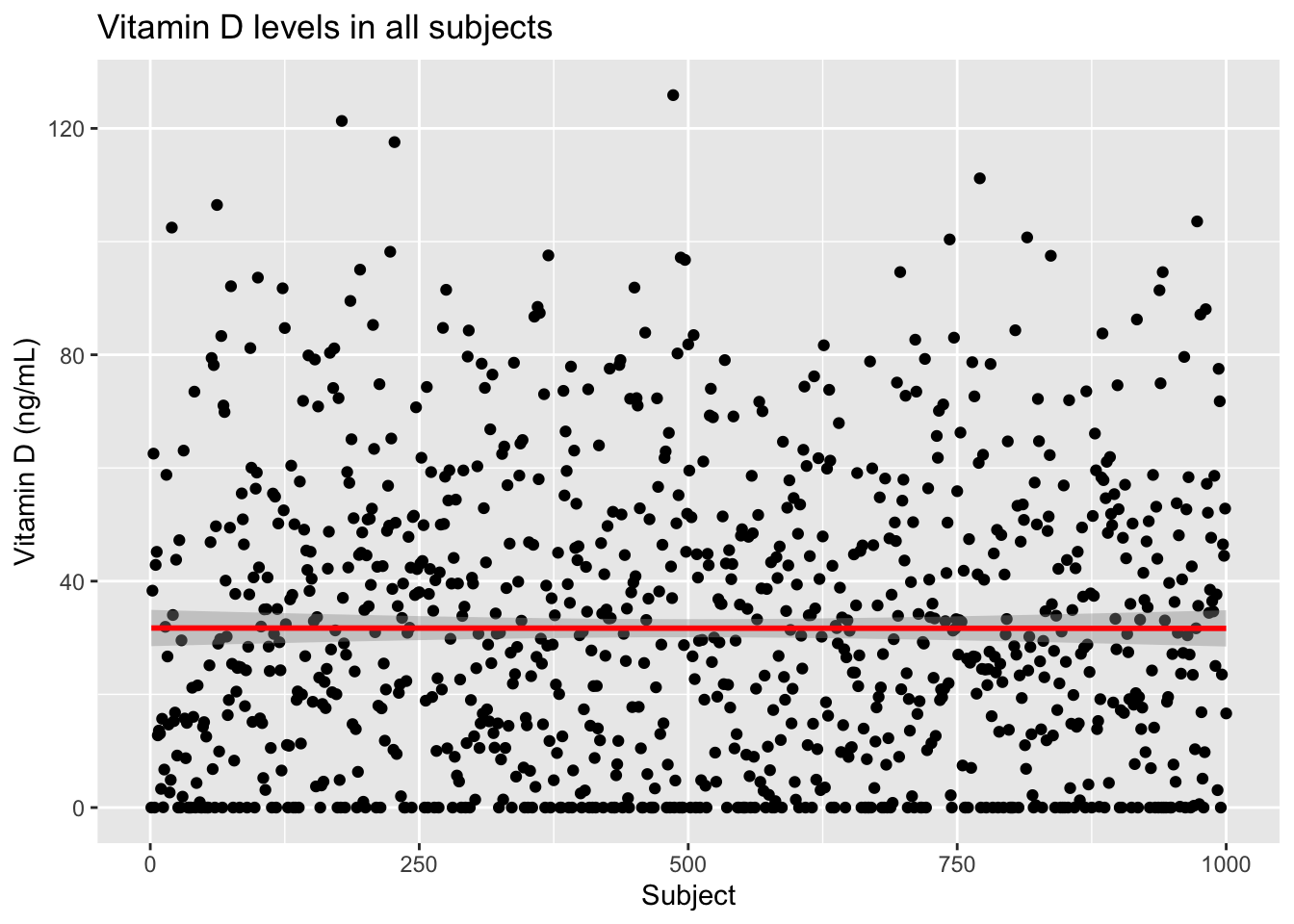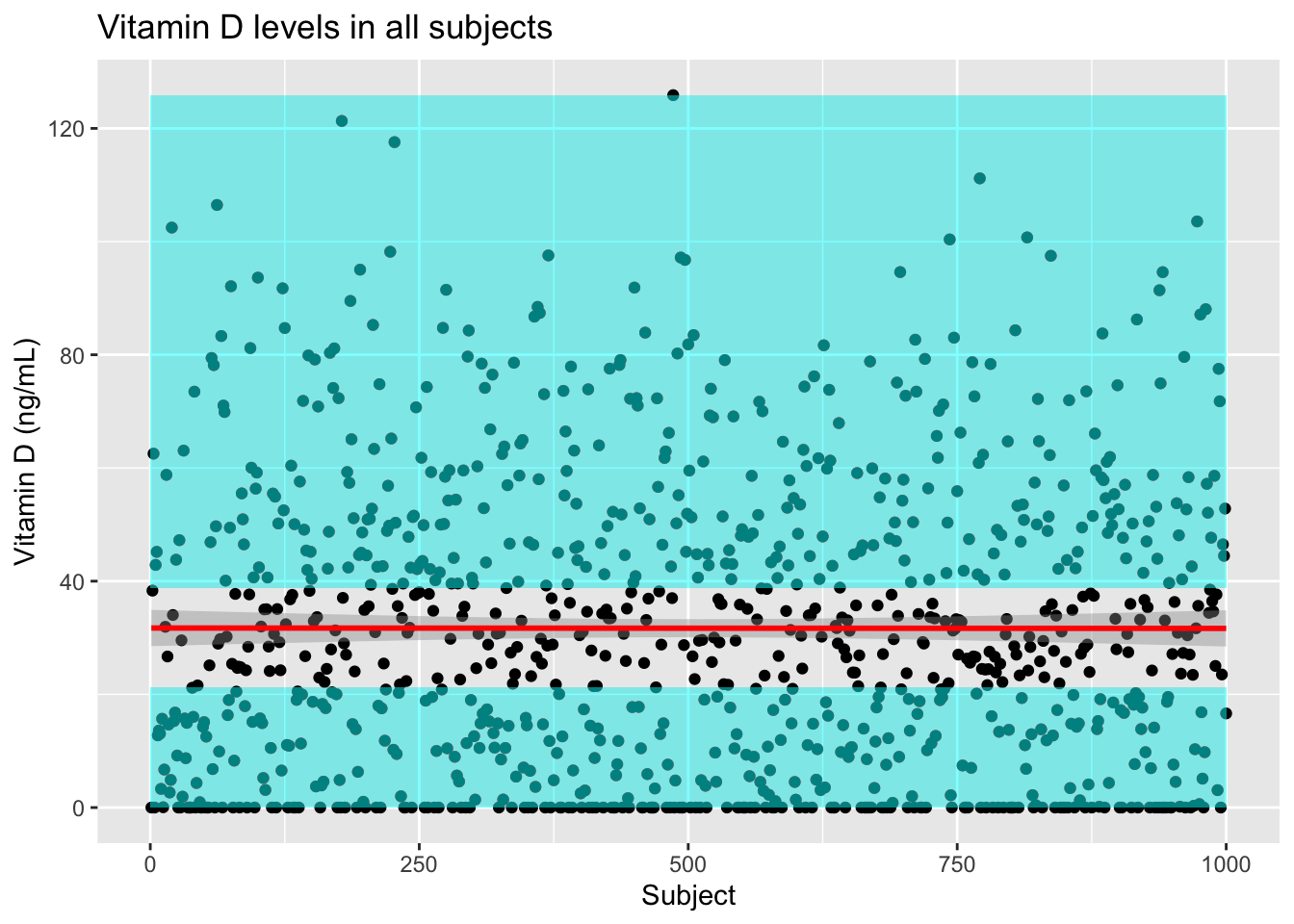10 Averages vs n-of-1
10.1 Averages vs N-of-1
Consider the following case:
1000 people took Vitamin D for 6 months. We measured their Vitamin D levels before and after, and sure enough: the average levels after are higher than before.
More specifically, let’s say the average at the beginning of the study is 30 mg/nL, widely considered the absolute minimum for a healthy person.
Code
study <- tibble(subject=1:N,
vitamind=rnorm(n=N,
mean=MEAN_VITAMIN_D,
sd=MEAN_VITAMIN_D
)
) %>%
transmute(subject, vitamind=if_else(vitamind<0, 0,vitamind))
study_plot <- study %>% ggplot(aes(x=subject,y=vitamind)) +
geom_point() +
geom_smooth(method= lm, formula= y ~ x, color="red") +
labs(x="Subject", y = "Vitamin D (ng/mL)", title = "Vitamin D levels in all subjects")
study_plot
Note that, although the average level is about 30 mg/mL, there are many subjects whose levels are considerable above and below that.
Code
maxd <- max(study$vitamind)
study_plot +
geom_rect(xmin=0,ymin=0,xmax=N, ymax=MEAN_VITAMIN_D - sd(1:MEAN_VITAMIN_D),
fill = "lightblue",
alpha = 0.007) +
geom_rect(xmin=0,ymin=MEAN_VITAMIN_D + sd(1:MEAN_VITAMIN_D),xmax=N, ymax=maxd,
fill = "lightblue",
alpha = 0.007) 
Another way to represent the study is with a boxplot variation called a violin plot.
Code
study %>% ggplot() +
geom_violin(aes(x=subject,y=vitamind),
draw_quantiles = c(0.25, 0.5, 0.75)) +
labs(x="", y = "Vitamin D (ng/mL)", title = "Vitamin D levels in all subjects")
To make this more fun, let’s assume we have additional information about the subjects in our trial.
Code
study <- cbind(study,
nationality = replicate(N, sample(c("USA","Japan","Europe"),size=1)),
weight = rnorm(n=N, mean = 120, sd = 50))